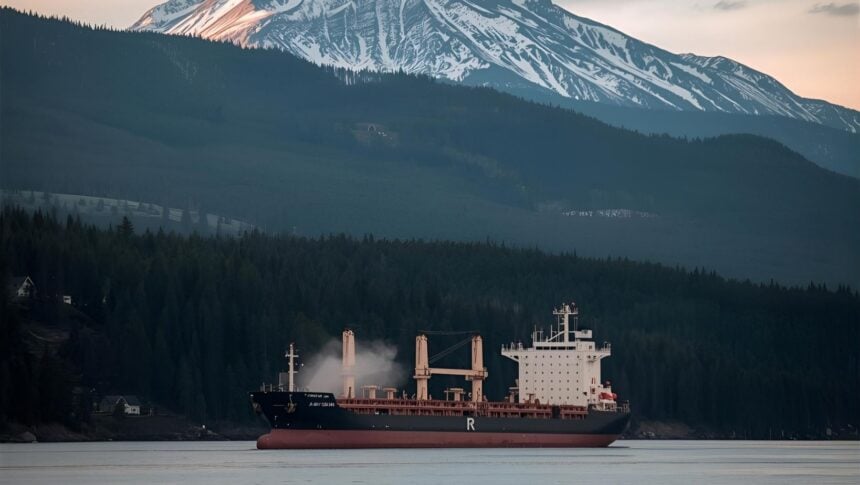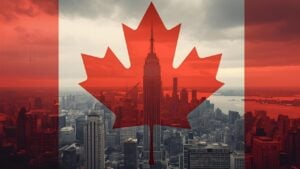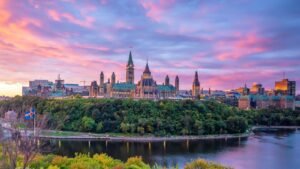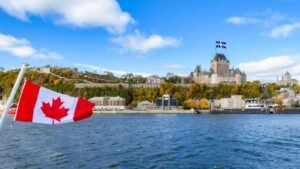Federal Energy and Natural Resources Minister Tim Hodgson is not entertaining calls to repeal British Columbia’s North Coast oil tanker ban, at least not yet.
Asked Friday whether Ottawa would lift the moratorium to clear the way for a new crude pipeline to the Pacific, Hodgson told reporters in Montreal: “It’s a hypothetical question right now, because there is no project before us.”
The comment lands amid a fresh push from Alberta to sketch out a path for another export line.
Premier Danielle Smith said this week the province and Ottawa are “about 80%” aligned on a framework that could enable a privately built pipeline if Alberta accepts environmental conditions. Any deal would still face a high hurdle on the coast.
British Columbia Premier David Eby reiterated his government’s support for the tanker ban, and pipeline companies have signaled they will not invest without certainty that crude carriers can load on the North Coast.
Industry leaders have been equally blunt, enbridge chief executive Greg Ebel said building a pipeline without tanker access would be “a pipeline to nowhere,” a reminder that shipping constraints, not just permits, determine whether a project makes financial sense.
Hodgson’s reply suggests the federal position is to keep the conversation grounded in what proponents actually file, rather than in hypotheticals about repealing federal law. The Oil Tanker Moratorium Act became law in 2019.
It bars vessels carrying more than 12,500 metric tons of crude or persistent oils from stopping, loading, or unloading at ports along B.C.’s North Coast, including Dixon Entrance, Hecate Strait, and Queen Charlotte Sound.
The measure complements a longstanding voluntary exclusion zone and was designed to protect ecologically sensitive waters and coastal communities. The statute’s scope is narrow.
It does not apply to liquefied natural gas carriers, which is why LNG Canada can ship from Kitimat while crude tankers cannot.
The legal guardrails are clear and would require Parliament to change the law before crude exports could move from ports like Prince Rupert or Kitimat under a new oil line.
The government’s own summary lays out those details with specificity. Transport Canada’s overview of the Act remains the operative reference.
Ottawa also has to navigate Indigenous rights. Coastal Nations have asserted title and stewardship responsibilities in waters covered by the moratorium.
In an open letter this week, the Lax Kw’alaams First Nation said it opposes any repeal or amendment of the Act and warned that a move to enable crude exports on the North Coast would trigger the Crown’s duty to consult at the highest level.
The First Nation said its position reflects both legal obligations and the risks of an oil spill in its territory.
That signals a significant consultation process would be required even if a proponent were to file an application. Read the Lax Kw’alaams letter.
Canada set a new production high in 2024 after the Trans Mountain expansion opened, but analysts expect the system to tighten again later this decade.
If pipeline and marine access fail to keep pace, Western Canadian producers could face wider discounts to U.S. benchmarks during periods of congestion, particularly if Trans Mountain runs near full by 2027 or 2028.
That is one reason Alberta is pressing for a clear route to tidewater and tying it to a broader emissions bargain that includes progress on the Pathways carbon capture project.
The federal government has said any new oil export line would have to align with emissions reductions and large-scale abatement, a linkage that raises the bar for proponents but could also provide policy certainty if an agreement is reached.
Hodgson’s caution does not close the door on future change.
It telegraphs that Ottawa wants a concrete plan, full financing, and a regulatory filing before it wades into a politically charged debate about repealing a signature piece of coastal protection law.
Until then, the tanker ban stands, Alberta is still socializing its pipeline concept, and companies are running the numbers on whether the economics justify taking the first formal step.
The next signal to watch is whether a private consortium emerges with a detailed proposal that includes Indigenous partnerships, a credible construction schedule, and a marine safety case that could persuade Parliament to revisit the moratorium.
Without that, the question remains what Hodgson called it on Friday: hypothetical.




















